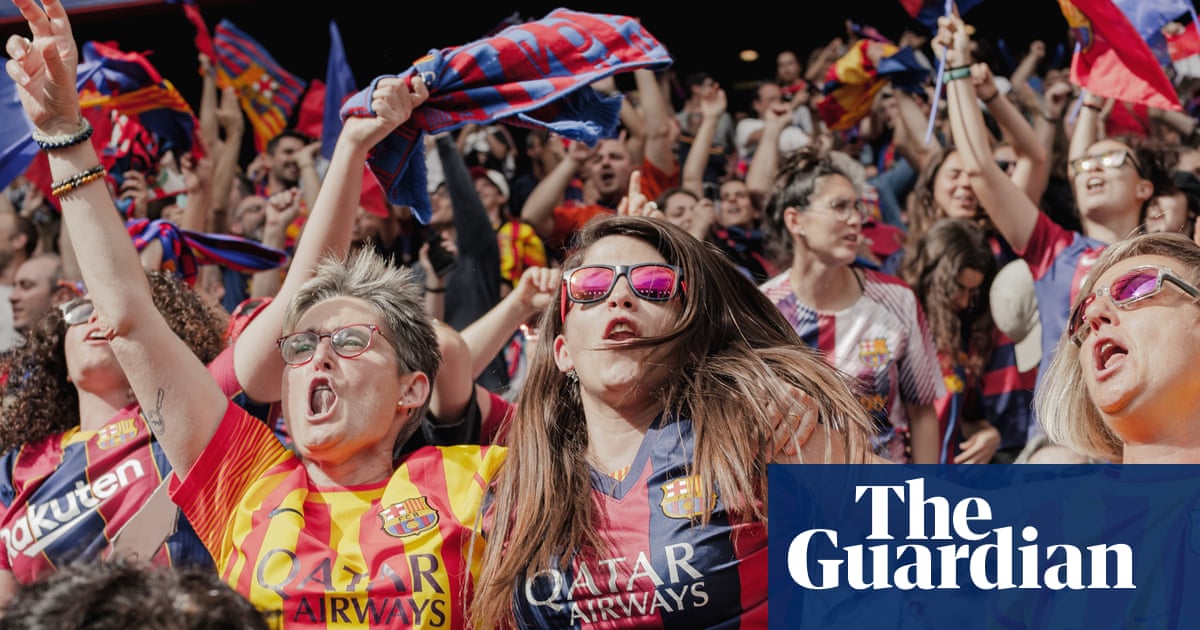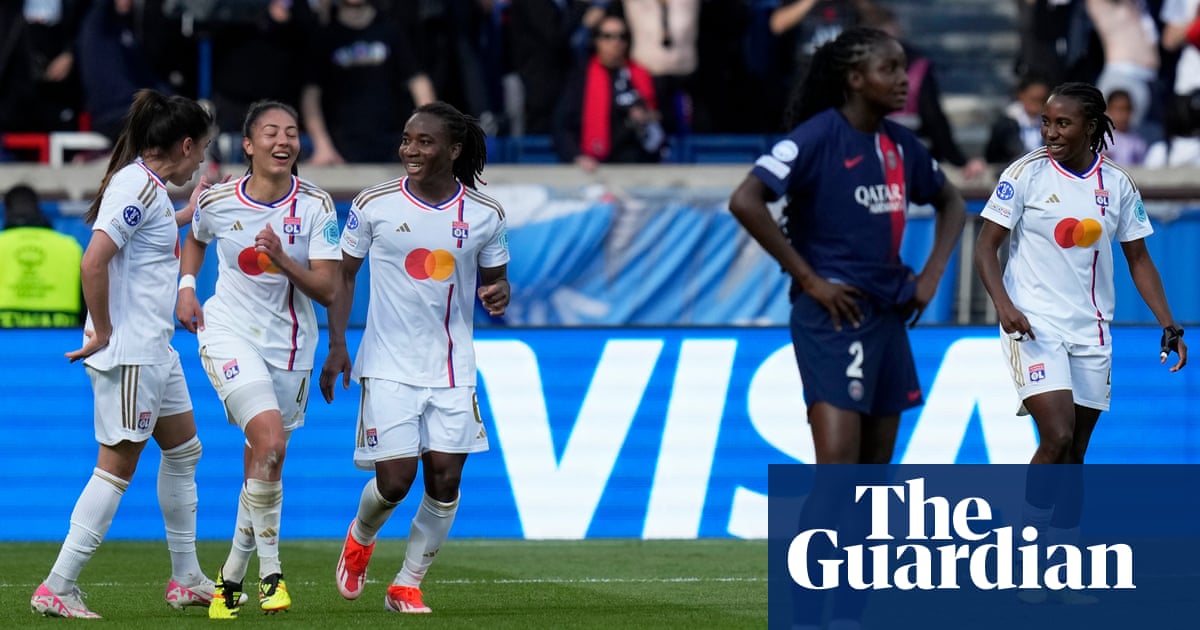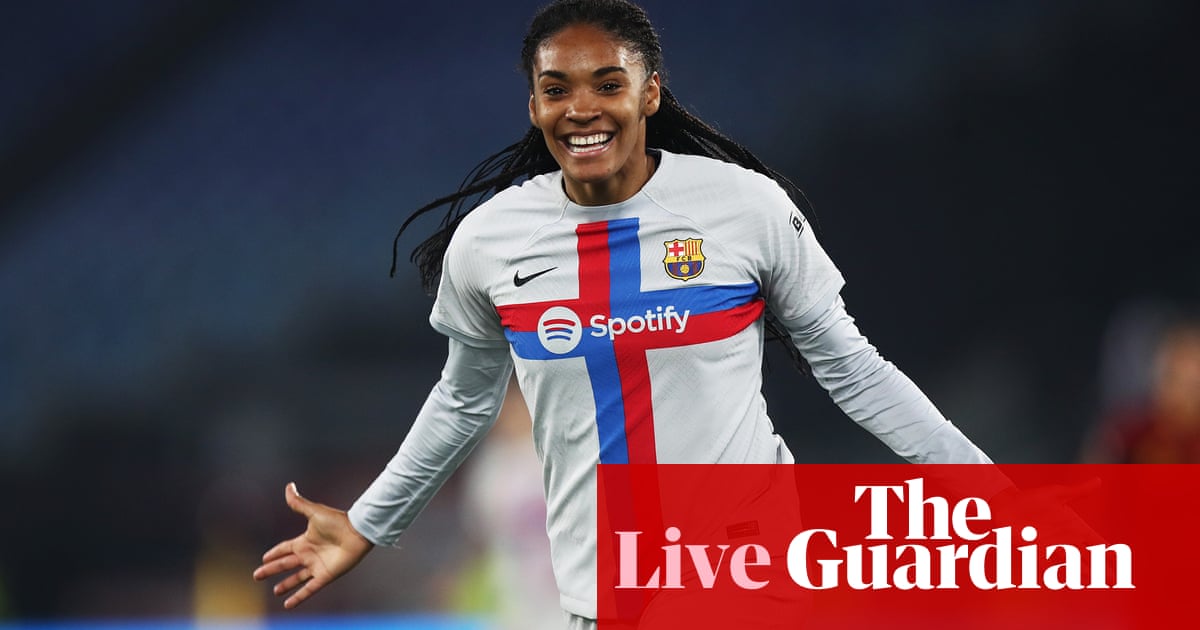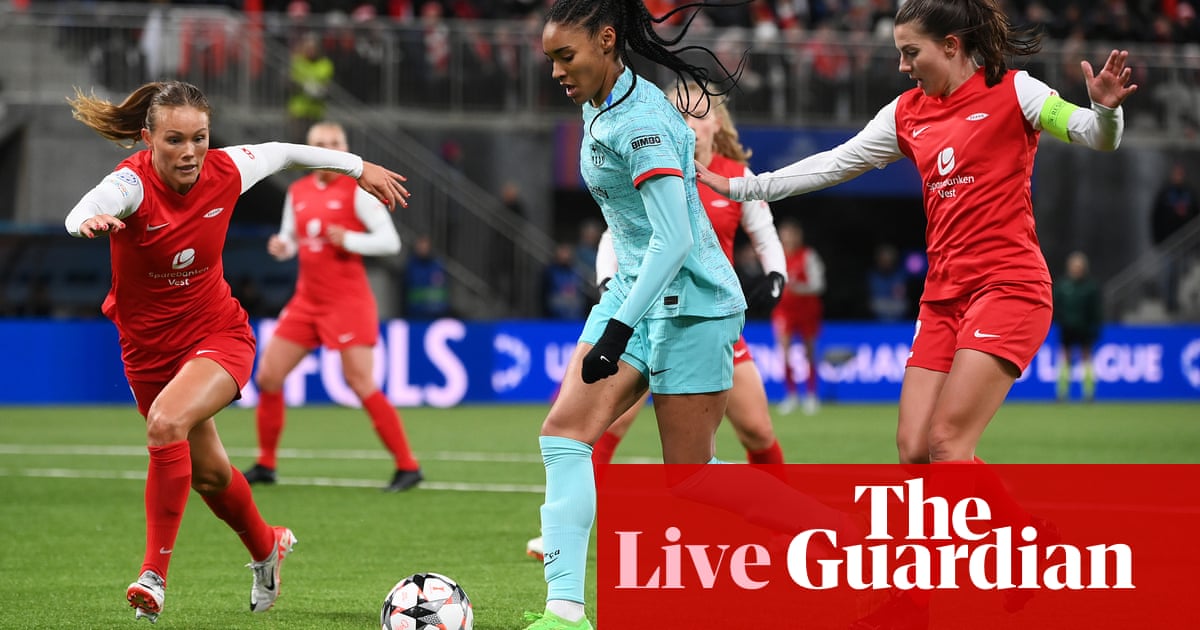
On Sunday night, back in Barcelona, some people were wondering why some streets were blocked and people were decked in Barça gear – unfortunately, women’s football is still under the radar of most.
But things are slowly changing.
Over the weekend, a sea of blaugrana [blue and burgundy, the Barça colours], took over the streets of Bilbao for the final of the Women’s Champions League. With 50,827 people at the San Mamés stadium, the attendance record for a Women’s Champions League final was broken. For Bilbao, a city of around 350,000 people, this influx of Barça fans represented more than 10% of its population.
These numbers were surely helped by the fact the Basque city is only a six-hour car ride away, although true fans also made the trip to last year’s final in Eindhoven – about 20 hours by bus. Silvia, whom I recognise from the Johan Cruyff Stadium, home of the Barça women’s team, tells me she was at the suspenseful 2023 final, and almost left the premises at half-time when Barça were losing 2-0. As we know, the Catalan team turned it around, and this year, Silvia is confident, because they are more confident she says. Her friend Lola chimes in: “Most self-confident and less over-confident”.
And of course there’s the famous “theory of three” whereby fans see in occurrences of the No 3 – the third final, the third match against Lyon, Alexia Putellas, the team hero is 30 years old, if they win it would be her 30th title, and so on – an omen that the final must be won. Silvia concludes with one last sign, her bus number for the journey to Bilbao is 21, 2+1=3!
As I roam the area around the Camp Nou, still under construction, from where the 22 buses are leaving, I run into Anna and Judit, two 20-year-olds from a small Catalan town who are making the journey. Their story is sadly still much too common to this day – they could not play football or had to drop it for lack of access. And few people have the fire (or the parents) of Lucy Bronze to drive over an hour to get a to a girls’ team. But Judit and Anna are not bitter, they are happy getting their football thrills from watching the Barça women win match after match.
The dominance of Barça is not only explained by a shallow competitive field at home and internationally, the team is packed with superstars and international-level players – besides the England players Bronze and Keira Walsh, a significant portion of the Spanish national team plays for Barcelona and the last three Ballon d’Or winners, Putellas (twice) and Aitana Bonmatí are the superstars. Which made it hard for Laura, to decide who to paint on her nails. She finally went for Cata Coll (13), Putellas (11), Clàudia Pina (6), Patri Guijarro (12), Bonmatí (14) and Ingrid Engen (23). When Laura justifies her choices, she says: “Alexia, you just don’t question it, she’s the queen.” Though she admits a slight preference for Aitana, the queen remains the queen.
She goes on to explain that while she has watched Barça pretty much all her life, she only discovered professional women’s football a couple of years ago. Many people only realised it was “a thing” when the Barça women won their first Champions League in 2021. That is because Barcelona did not become really good until the late 2010s, when the club finally decided to invest in its women team. But something is to be said of real fans – it does not matter the gender, they support their team. That’s how Montse and Pilar (below) got into the game: their husbands, Barça men’s fans, started watching the women and kept telling them to watch them too. And they have become fans themselves.
One of them reminds me of the Barcelona motto – ”more than a club” – and when I ask them what is that more? They say, without skipping a beat, “country”. Because of course for Catalan supporters of Barça, the issue of Catalonia independence is inextricably linked.
As I continue my walk down the sunny streets of Bilbao – another sign of the universe after three (again) straight weeks of rain – among the Mapi, Aitana and Alexia shirts (as well as a few Messi, Gavi, etc), I spot a group of four older women sporting Lyon shirts and approach them, in my search for fans of all ages – jackpot. As it turns out, Jocelyne, Michelle and Fabienne, are former professional footballers themselves, pioneers of the game. They were essential in creating the team that would become Lyon back in the 1970s, for which they played for almost a decade. Their goalkeeper was on the bench for the French team that travelled to Mexico City for the first Women’s World Cup – for more on that story watch the documentary film Copa 71.
Back at the fan zone, I meet Mar, and her girlfriend Sandra, who is also a former footballer – she played for Barça 20 years ago, but if women’s football is still struggling to find investments today, you can imagine that back then it was almost impossible to envision a career in the sports. She does not miss playing and watches as many games as she can, with Sandra nearby reading a book, in particular kids’ matches because she likes spotting the gifted ones.
A few metres away, I spot Irati and Maria, another, younger, lesbian couple – one of them is a hardcore Barça fan, which means that the other had to become one as well. And since they are in a long-distance relationship, with Maria living close to Bilbao, coming to the final was also an excuse to see each other, and pre-celebrate their three-year anniversary, only a month away. As I circle back to a group of queer friends I know from Barcelona, I tell them about the queer women I just met and they joke that “there’s only lesbians here”. A famous cliche regarding women’s football, which speaks volumes about how much more open-minded the female version of the sport is. Most of the Barça women’s roster is openly queer.
From that same group, Maria and Ina are true fans of Barça, as well as another Barcelona-based team, Levante Las Planas. They got a tattoo together after last year’s final, and are working on the design to commemorate this year’s victory, 2-0 over Lyon.
Ina also plays football – she actually says what little she knows about playing she got from watching dozens of Barcelona games. Rachele came to the match with a group of girls who play in the street football tournaments she organises every Sunday in Barcelona. Claudia, who plays in the LGBTQ+ amateur football team Panteres Grogues, could not make it to Bilbao but saw the games with most of her teammates and was at the celebration at Barcelona city hall to welcome the team home.
On the way back to Barcelona from Bilbao, many cars had Barça flags or scarves hanging from the windows, and most people were still sporting their jerseys, you could feel a sense of belonging as their paths crossed at gas stations along the road: “I was there, I saw them win their third title”. Women’s football still has that sort of intimate alternative vibe, probably only for a few more years as the sport continues its boom. Still, glass ceilings are hard to break – the Women’s Champions League final in 2026 will be held at a stadium with half the capacity as that of San Mamés, Switzerland decided to drastically reduce its investments for next year’s European Championships, and USA, Canada and Mexico withdrew their bid to host the next Women’s World Cup. To quote Aitana Bonmatí: “Sometimes it feels like things haven’t changed in the least [in spite of Spain’s World Cup victory].”












